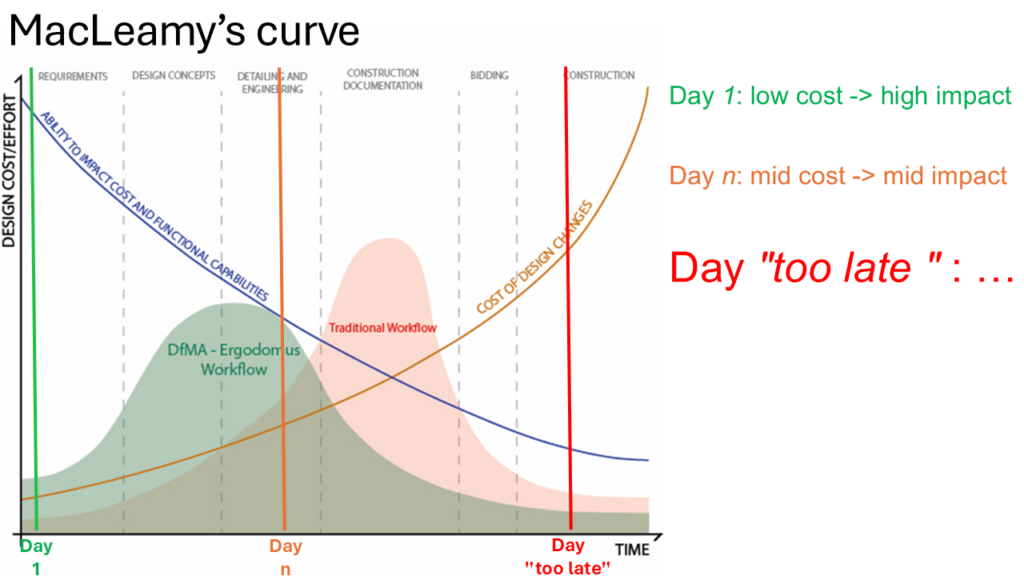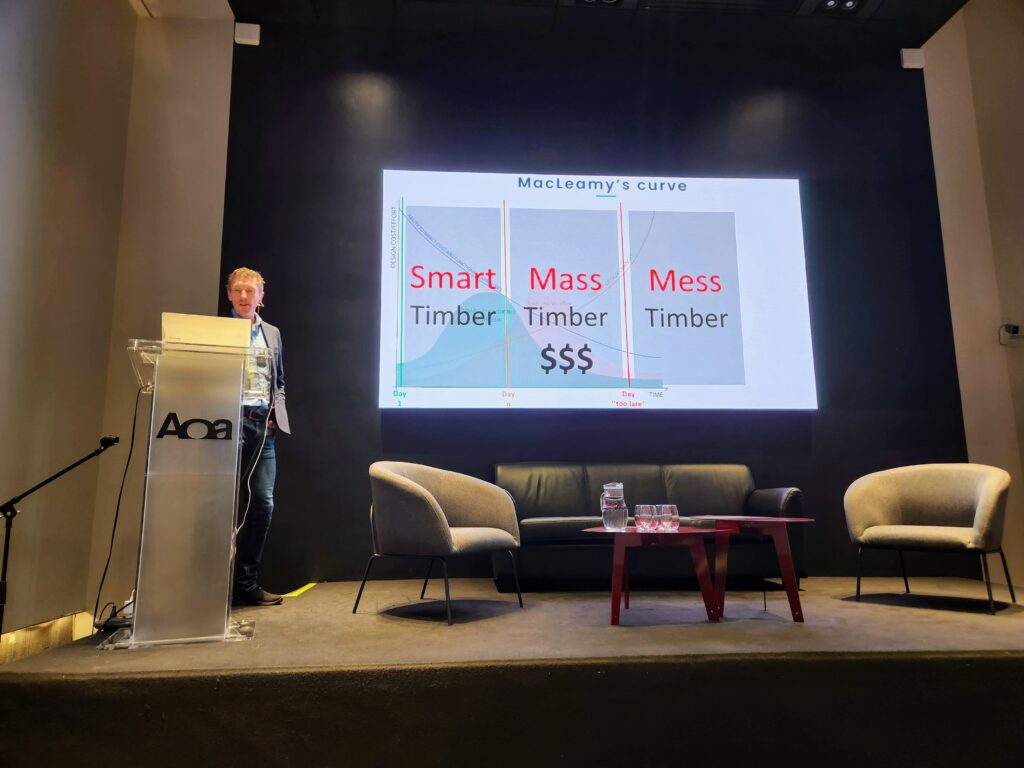The MacLeamy Diagram, also known as the Effort Curve, illustrates how the timing of decision-making impacts project costs and effort. Originally designed to show the benefits of early collaboration in the BIM process, this concept is especially relevant in timber engineering, where early involvement of a timber engineer can drastically improve project outcomes.
In timber construction, the diagram highlights a critical principle: the sooner a timber engineer is involved, the better and cheaper the project will be. According to the MacLeamy Diagram, making key decisions early—such as choosing the right materials (like CLT, GLT, or LVL), optimizing designs for DfMA (Design for Manufacture and Assembly), and detailing connections—reduces costly revisions later in the project. The further the project progresses, the more expensive and difficult it becomes to make changes, especially due to timber’s unique properties like grain direction, shrinkage, and expansion.
Key Points for Timber Engineering:
Day 1 Involvement
Involving a timber engineer from the very start is crucial. Early input allows for optimized structural designs, efficient use of materials, and proper detailing, leading to a more streamlined construction process.
Effort Shift
By front-loading the design and engineering efforts, potential issues such as clashes or inaccurate tolerances can be identified and solved early, reducing the likelihood of costly errors during construction.
Cost Efficiency
Early decision-making ensures that problems are addressed before construction begins, minimizing on-site changes and rework. This leads to significant cost savings, as the cost of making adjustments grows exponentially as the project progresses.
The Sooner, the Cheaper
The earlier a timber engineer is involved in a project, the more they can influence the design to achieve both cost savings and structural efficiency, ensuring the project is completed on time and within budget.
The language of Mass Timber Engineering is incredibly extensive.
Would you like to explore a term we haven’t covered yet? Contact us and let us know!

